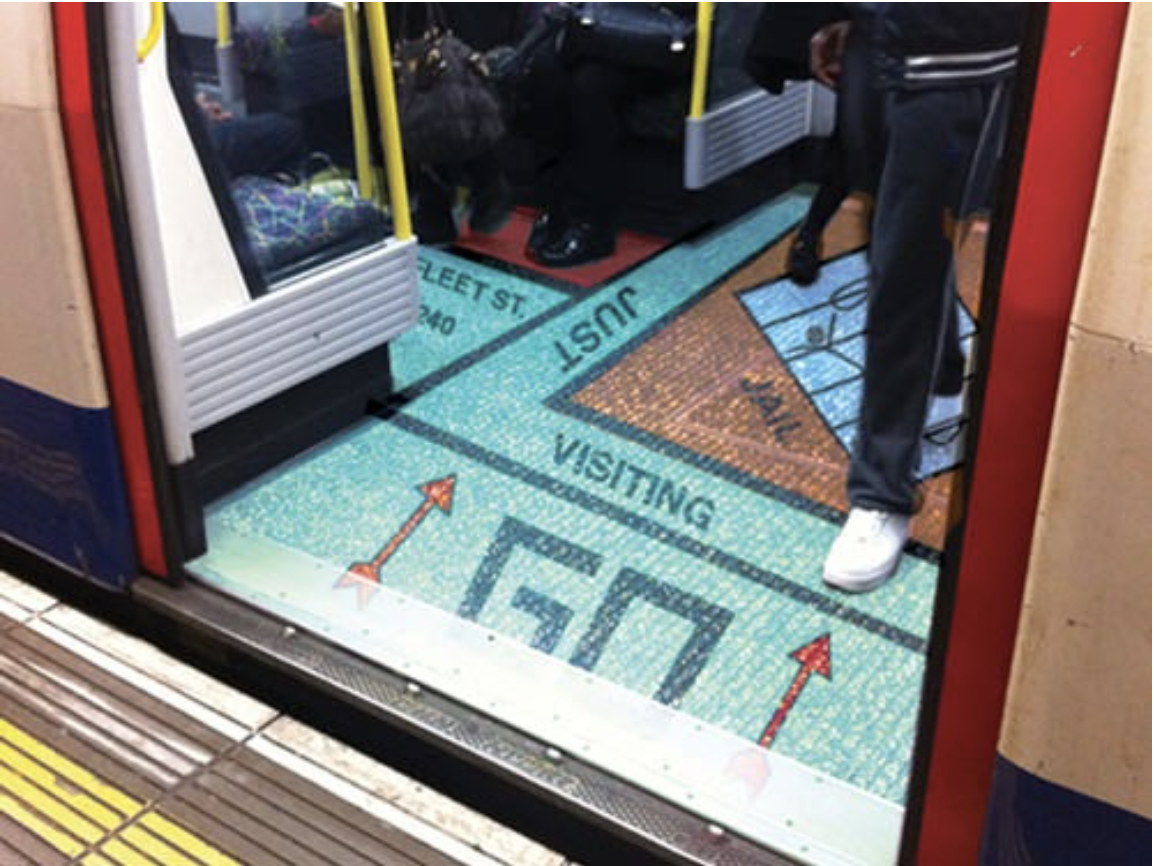When you hear “bring empathy to your customer journey mapping,” do empathy maps like these immediately spring to mind?
Image: NNGroup
Image: the Empathy Map Canvas
While these maps are great tools to organize your insights from empathy, just filling them out does not constitute empathy.
As Amy Thibodeau says so succinctly, “When tech people casually reference empathy they’re treating it like just another commodity. This isn’t intentional or malicious. It’s a byproduct of living in a world of ultimate convenience and privilege. But you can’t order up empathy the way you can order a ride or dinner. Empathy takes practice.”
The real work in empathy comes before you fill out a customer empathy map, a customer journey map, or any other kind of map.
What should you do? Try these three approaches:
1. Get out of the office and meet the end user on their turf
To be able to appreciate what your user is going through, you have to actually see what your user is going through.
If you’re saying, “Well, DUH,” then you haven’t sat through as many design meetings as I have where the team is - with the best of intentions - trying to imagine what the user is going through.
Image: Dilbert
Yes, it requires more investment. Yes, it may take you out of your comfort zone. Do it anyway. You’ll be in good company. This kind of company:
Social media giant Pinterest makes a habit of sending user experience researchers and designers to visit the homes of Pinterest users. Why? Pinterest researcher Gabriel Trionfi, in his classic interview on the subject, gave the example of visiting the home of a nursing student who shared how she and her boyfriend used Pinterest to plan what to cook together, often ending in mock “fights” over the iPad. People using Pinterest together, bonding offline… all those were insights into the user base that Trionfi would never have had otherwise.
MyEdu
Jon Kolko, during his term as VP of Design at MyEdu, “spent hours with students in their dorm rooms, watching them do their homework, watch TV, and register for classes. We watched them being college students, and our goal was not to identify workflow conflicts or utilitarian problems to solve; it was to build a set of intuitive feelings about what it means to be a college student. We conducted the same form of research with recruiters, watching them speak to candidates and work through their hiring process.”
Through this qualitative research, MyEdu was able to gain a holistic picture of college students and college recruiters and pinpoint where there was a disconnect:
Image: MyEdu
The resulting value proposition, “MyEdu helps students identify their skills and present them to employers in a credible way,” was strong enough to help the startup move to large-scale adoption and eventually acquisition.
Linkedin Sales Navigator
Former head of product for LinkedIn Sales Navigator Sachin Rekhi explains how he had his entire team, from product managers to designers to engineers, “do a day-long shadowing with our own sales team at LinkedIn to really grock what a day in the life looked like.” Walking a mile in someone else’s shoes, Rekhi says, “goes well beyond ‘gathering their requirements’ to truly understanding their hopes, dreams, frustrations, fears, proclivities, and more. It requires us to move past the classic economic view of humans as rational decision-makers to a full acceptance of the emotive and psychological beings we really are.” The mark of true empathy is to be able to see and hear people for who they are when they are busy being themselves.
Evoke
Sometimes the hands-on interaction with your users can completely change your product. Evoke founders Jonathan Wylie and Lakshmi Shivalingaiah describe how “in the course of ten rollercoaster weeks, our customer segment changed from executives on corporate campuses to moms on playgrounds and a tool that was just part of our product turned into the killer product… There’s no way we would have learned any of this unless we were out of the building and in the trenches, with parents over an extended period.”
Seeing the immeasurable value of direct interaction with users on their turf, Wylie and Shivalingaiah make it an inseparable part of their product design and development. “ It’s always an incredible experience to be invited into someone’s home to learn about how they capture their most precious family moments. Sometimes, the learning is immediate and conclusive. Other times, we have to do multiple rounds before we arrive at an answer to an important question.”
While physical presence on your user’s turf is ideal, you can get some of the benefit from this approach even through virtual means. If you meet your user over Zoom, for example, make sure that you have a good view of their space - and not just the white wall in back of them. When you ask questions, pick questions that let them talk and share, that show that who they are as a person matters. Make room for them to share their turf with you.
Once you’ve gotten an up-close-and-personal look at the life of your user, the next step is to try and experience it firsthand.
2. Immerse yourself in the user’s experience
If you can actually make yourself the user, so much the better! Otherwise known as eating your own dogfood, or just “dogfooding,” using your own product internally is a powerful way to naturally experience empathy for your user on a day-to-day basis.
Unfortunately, you can’t always do that. If you’re a man designing feminine hygiene products, dogfooding just isn’t fully possible. (Unless you can get very creative.) In a case like that, you will want to design yourself a situation where you can simulate the user’s experience for yourself.
This isn’t a new concept. From smudging up your glasses to mimic vision issues to wearing fat suits, there are plenty of ways people have tried to appreciate the experiences and challenges of others.
In 2013, designer Peter Smart traveled 2517 miles across Europe on a self-imposed challenge to solve 50 design problems in 50 days. He describes how “As I tried to tackle a new problem every day, I learned that analysis of people’s behaviours and problems simply wasn’t enough — I had to make them my own.
“From sitting with beggars on the streets of Turin (day 42) to getting lost in the streets of Antwerp (day 23) to having no money or energy in Zurich (day 38), my adventures immersed me in unfamiliar situations and enabled me to learn, analyze and solve more effectively than I ever could in isolation.”
Day 19 found Smart on a crowded London Tube platform, and he decided to make Tube congestion his problem of the day. Smart observed the situation, interviewed commuters, performed analysis… and didn’t come up with any ingenious solutions.
Then he tried something else.
He boarded the train himself… and that made all the difference.
As Smart tells it, “As I tried to find a spot among the sweaty mass of people, I suddenly understood the real problem.
There was space further down towards the middle of each carriage, enough to fit at least another 10 people. However, people didn’t want to move down the carriages. Instead, they crammed by the doors for fear of not being able to get off at their stop.”
Smart’s immersion-based empathy led to one of the most-discussed of his 50 solutions:
Images: 50 Problems 50 Days
Turn the Tube car floor into a giant Monopoly game, playfully encouraging people to move out of jail and down toward the middle of the car to the more valuable properties.
“Whereas my best design processes had failed,” points out Smart, “getting on the train revealed the real problem to me as clear as day. I discovered the underlying problem not because I had observed, analyzed or interviewed, but because I had felt it myself.”
****I need to note here that any immersion technique needs to be combined with number 1 above: meeting the end user on their own turf. While the design industry used to believe that you could understand your user well enough by mimicking their experience, we’ve come to realize that you only get a part of the picture that way.
3) Help your entire team gain from your knowledge
Customer success is not only for the customer success person. If, for example, Pinterest user experience researcher Trionfi had gained wonderful depths of user understanding from his home visits but couldn’t communicate it to the rest of the product team, that would be one big fail.
You will need to find a way to bring back what you’ve gathered through steps 1 and 2 in a humane, empathy-inspiring way. Take videos, photos and voice recordings. When you cull and edit them for presentation, ask yourself:
Am I preserving the voices?
Am I preserving the struggles?
The results of empathy
Empathy is such a touchy-feely word that it almost feels sacrilegious to talk about the pragmatic benefits of empathy in product design. But in case you (or your manager) need some cold, hard, concrete convincing, here goes:
Uncover new opportunities
When a Mexican-American janitor at a Frito-Lay plant approached PepsiCo top management with an idea for a Cheetos flavor based on a Mexican corn spice mix, they could have laughed it off.
Instead, they were inspired to put themselves in the place of Mexican immigrants living in a country where the snack foods don’t reflect their culinary culture... and they trial launched the Flamin’ Hot variety of Cheetos.
Several decades and billions of dollars in sales later, Flamin’ Hot is still going strong.
Image: Flamin Hot Cheetos
Gain a competitive advantage
Evoke founders Wylie and Shivalingaiah say it best: “Knowing our customers and their problems first hand has given us a huge head start and a competitive advantage.
“Most entrepreneurs seem to just make this stuff up for a pitch deck or to please stakeholders, but the validated learning that we gained through these interviews and other methods of business model experimentation is not something that can be easily replicated.”
Save time on mapping
If you haven’t done the three empathy-building steps above, then filling out any maps - empathy, customer journey or otherwise - is going to be superficial and take a long time.
If you have spent the time in connection and immersion, however, filling out a customer map will be a natural outgrowth of what you already know. Short, sweet and accurate.
Invest in empathy
True empathy is a hands-on, intensive, messy process. But it’s worth it.
Do you feel me?










